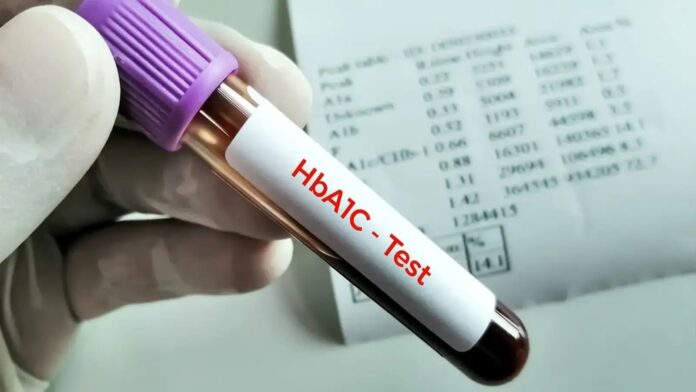A good HbA1c is excellent, but it’s an average and can hide dangerous daily fluctuations—like frequent lows or damaging after-meal spikes—that increase long-term risks. To get the complete picture of your diabetes control, you need to combine your HbA1c result with strategic daily self-monitoring.
The HbA1c test is widely recognised as a key tool for checking how well diabetes is controlled. This test provides an average of blood sugar levels over the past three months, similar to a report card that shows overall performance. A good result can feel rewarding, like passing a class. However, relying only on this one test can be misleading. An average can mask the daily fluctuations in blood sugar levels—the significant changes that occur throughout the day. It is essential to understand these patterns for better diabetes management. This knowledge enables people to make informed decisions about their health.
What is the HbA1c test, and what does it actually reveal?
According to the Centres for Disease Prevention (CDC), the HbA1c test measures the percentage of your haemoglobin—a protein in your red blood cells—that is coated with sugar. Since red blood cells live for approximately three months, this provides a long-term average rather than a single snapshot in time. For most people with diabetes, the goal is an HbA1c below 7%.
However, think of it this way: you can get an average of 140 mg/dL by being at 140 all day, or by swinging wildly between 80 and 200. “The HbA1c test cannot distinguish between the two; still, your body can certainly feel it”, Dr Shahid Shafi Bhat, Consultant in Internal Medicine at Ujala Cygnus Group of Hospitals, tells Health Shots.
Why doesn’t a good HbA1c guarantee I’m safe?
The danger of a “good” HbA1c is that it can mask glycemic variability—the swings between high and low blood sugar. Research is increasingly showing that this variability itself is a risk factor for complications. For example, you could have an HbA1c of 6.8%. Still, if it’s the result of frequent episodes of hypoglycemia (low blood sugar) and extreme hyperglycemia (high blood sugar), you’re at risk. The only way to uncover this volatility is through consistent self-monitoring of blood glucose.

How can I utilise home testing to gain a better understanding of my HbA1c?
Your glucose meter is the tool that fills in the gaps left by the HbA1c. By testing at strategic times, you can build a detailed map of your daily glucose journey. This practice is often referred to as structured blood glucose monitoring, as per the Diabetes Journal.
Key testing times to add context to your HbA1c include:
- Fasting vs post-meal: Are your fasting numbers significant, but your after-meal numbers are always high? This could be a sign that you need to adjust your mealtime strategy.
- Before and after exercise: “Seeing how exercise impacts your numbers helps you use it as a tool to manage your levels and prevent dangerous lows”, suggests Dr Bhat.
- Paired readings: Check before a meal and two hours after. The difference between these two numbers reveals the actual impact of that meal.
How do I turn all this data into action?
Don’t just collect numbers, use them. Share your detailed logbook with your healthcare provider. This rich data is far more valuable than a single HbA1c number alone. It enables a more nuanced conversation about your health, as noted in the Annals of Family Medicine.
Seeing your daily patterns might lead to specific, targeted advice, such as:
- Adjusting the timing of your medication.
- “Changing the type of carbohydrates you eat at lunch”, advises Dr Shahid Shafi.
- Adding an evening snack to prevent overnight lows.
While your HbA1c is an essential part of your diabetes toolkit, it’s not the whole story. By combining its long-term view with the real-time, actionable insights from your glucose meter, you can achieve a level of control and safety that an average alone can never provide.

